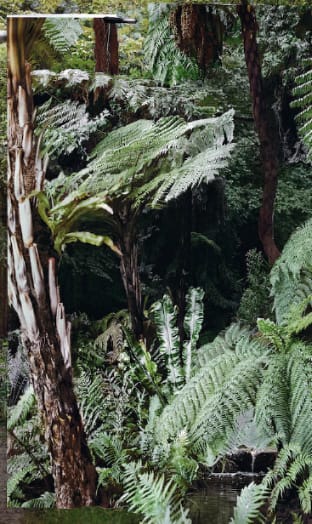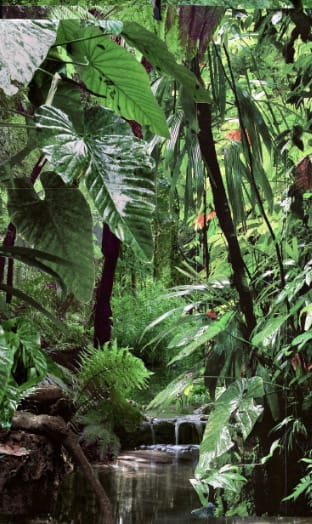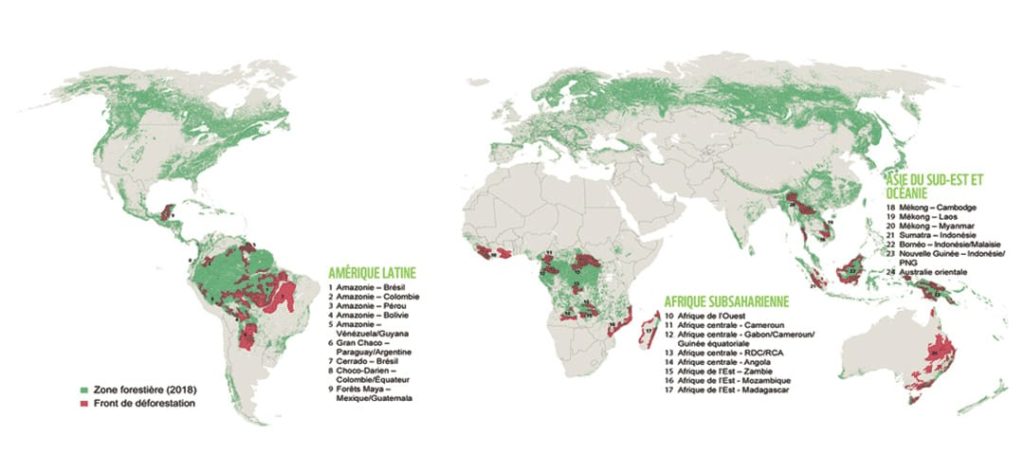Get informed
The current state of the forests
Forests occupy 4.06 billion hectares, or one third of the surface of our planet. This amounts to 0.52 hectares of forest per person in the world. They include landscapes as diverse as the boreal forest, the Amazon rainforest, the Siberian taiga…
These forests and their health have decreased significantly between 1990 and 2020: 420 million hectares of forest have been lost since 1990 due to human activity.
What is a forest ?
Forests include trees, of course, of various sizes, ages and aspects. But not only that: a forest is a living and sentient world of the most incredible biodiversity. One teaspoon of forest soil contains about 1 million organisms and 80% of the earth’s biodiversity is found there.
The so-called “primary” forests have the particularity of being untouched by human activity and have existed for 380 million years.
They represent today 1.11 billion hectares and are an essential indicator of the state of forest ecosystems.
To learn more about the state of the world’s forests, you can :
Visit the FAO website
Visit the Global Forest Watching website
Distribution of forest area in 2020 (million hectares)
source : FAO, Evaluation des ressources forestières mondiales, 2020, rapport principal, p11

Distribution of current degradation by forest type
source : FAO, Evaluation des ressources forestières mondiales, 2020, rapport principal, p11


Ecosystem services
As the backbone of the Earth’s ecosystem, forests provide many benefits to human and non-human populations. For example, an estimated 1.6 billion people depend directly on forests for their livelihood. More broadly, the entire world relies on forests for its subsistence.
Forest ecosystems provide :
- Lumber and construction wood;
- Wood for energy;
- Non-timber products (i.e. produced by forests, excluding wood): honey, berries, medicines, meat, etc;
- Regulation and protection of the ecosystem balance: climate regulation, carbon storage, cool islands, water purification, consolidation against landslides, etc;
- A melting pot of culture, traditions and identity: as evidenced by the myriad of ancient myths and stories (the Sumerian tree of life, Yggdrasil, the biblical tree of knowledge, the olive tree of Athens, the figure of the genealogical tree, the deity Kodama in Japan) or the multiple artistic representations of these environments, forests are the supports and inspirers of creation and transgenerational discourse.
Carbon storage
Forests are, along with the oceans, the Earth’s main carbon traps. Trees, organic matter and soils capture CO2 throughout their life. Forests therefore have a strong potential to fight against global warming, now and in the future. They have therefore become a lever of greening for structures claiming to offset their carbon emissions.
Since 2005, the Kyoto Protocol has formalized approaches to offsetting human activities against the environment. The principle is the following: a structure that emits greenhouse gases (expressed in CO2 equivalent) should promote activities that store CO2 in order to compensate for their emissions. To put it simply, if we follow this theory: 1 (an emission) – 1 (an offset) = 0 (I did not pollute).
This interested focus on forests results in projects that are more or less beneficial from an environmental point of view. Planting trees is not always a good ecological measure. Indeed, planting trees of the same species in monoculture and imported, is neglecting the physico-chemical balance of the environment, biodiversity and local populations and yet it does not derogate from the prerogatives of carbon compensation. It is precisely believing that all this is as simple as 1-1 = 0.
More broadly, the logic of compensation is sometimes an obstacle to more profound changes in emissive structures. Since I compensate, why reduce? However, the least harmful CO2 is the one that is not emitted and not the one that is compensated.
In this context, Greenline Foundation calls for vigilance regarding claims and approaches related to forestry projects. We support “holistic” projects that take into account all the factors of the environment (resources, biodiversity, sovereignty and living conditions of the population, etc) and for which the carbon storage appears as a co-benefit of a total sustainable management.
To learn more about carbon issues and carbon neutrality claims, consult the following resources

The main deforestation fronts

(source : WWF, les fronts de déforestation, 2021, pp 6-7)
Causes of deforestation
source : source : FAO, State of the World’s Forests, 2016

Risks and threats
Between 2015 and 2020, an estimated 10 million hectares of forest have been lost every year. This loss is due to several f:actors
- Agriculture (80%) ;
- Commercial and industrial agriculture (45-50%) ;
- Subsistence agriculture (30-35%) ;
- Breeding (14%) ;
- Infrastructures and urban growth (13%) ;
- Mining operations (6%).
In addition to this deforestation, there is a phenomenon of “mis-forestation”
The standardization of woods, the fields of trees and the rise of silent forests without biodiversity do not represent a quantitative loss of forest surface but a great qualitative loss in every other respect. In France, 80% of the plantations are monocultures.
In addition, global warming threatens forest species and requires thinking about resilient and sustainable management models (see for example the mosaic forest on the ONF ).
However, the decline of forests is not irreversible and should not lead to a fatalistic immobility. In recent years and thanks to the relentless fight of activists and actors in the sector, we have noticed a relative decrease in the annual rate of deforestation: 10 million hectares between 2015-2020 instead of 12 million hectares between 2010-2015.
Let’s act together
Forests represent a key resource for entire ecosystems and for all for Humanity. To endanger forests is to endanger biodiversity, water resources, human habitations, health, food security and the well-being of the whole planet.
What can you do ?
- Support rigorous and holistic projects, including those promoted by GLF
- Continue to inform and educate yourself on these issues (see the resources of the ONF, FAO All4trees, Envol vert, FSC, IPCC, etc.) To learn more about the causes of deforestation and the threats to forests, you can, for example, participate in the Fresco of forests intitative.
- Relay and disseminate statements and messages alerting to the situation of forests and proposing solutions. On this point, you can discover the advocacy activities of Envol Vert and Canopée-Forêts Vivantes. You can contact your elected officials and sign petitions.
- Adapt your consumption: Deforestation is directly linked to our consumption habits. To learn more about the “imported deforestation” part of your daily products, you can calculate your forest footprint (Envol Vert) and discover the small gestures that can reduce it. You can also choose to value certain trustworthy labels when you buy different types of products (for example the FSC label).
